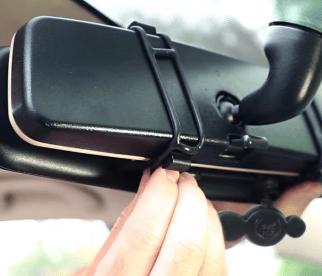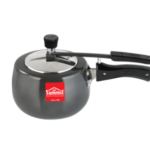Car accidents and other road incidents are unpredictable, and when they happen, evidence can make all the difference in insurance claims. A high-quality car dash cam serves as an impartial witness, recording crucial details like speed, road conditions, and any surrounding traffic. This evidence can strengthen your position with insurance companies, providing clarity on how events unfolded. High-definition dash cams are essential for clearly capturing license plates and facial recognition, ensuring that nothing is left to chance. Having recorded evidence on hand can save you time, money, and stress in the claims process.
Essential Features to Look for in a Dash Cam
Choosing a dash cam for insurance protection requires an understanding of its essential features. Look for a high-definition camera with at least 1080p resolution, which can capture clear footage even in challenging conditions. Features like night vision, wide-angle lenses, and loop recording ensure continuous coverage. Advanced dash cams may include G-sensors, which activate recording upon detecting impact, and GPS tracking, which records location data. High-quality audio recording capabilities also add value, capturing crucial sounds like verbal exchanges or horn sounds, which could support your claim during an investigation.
Benefits of Using a Dash Cam for Insurance Claims
A dash cam is invaluable when it comes to expediting insurance claims. Having video evidence of incidents helps avoid disputes over fault, reducing time spent on investigations. Insurance companies are more likely to accept evidence from a dash cam as it provides an objective account of the incident. This can significantly cut down the time required for claim approvals. In cases of hit-and-run accidents, the camera footage can capture license plates or even the faces of offenders, ensuring a smooth claim process while avoiding potential insurance fraud.
How Dash Cams Help in Proving Non-Fault Claims
In accident disputes, establishing fault is often challenging, particularly when both parties claim innocence. With a high-quality car dash cam, you gain a valuable tool that captures the accident’s context, helping to prove non-fault claims. Video evidence can show if another vehicle abruptly cut you off or failed to stop, providing conclusive proof that you weren’t responsible. Insurance providers are more likely to rule in your favor when you have clear, verifiable footage supporting your claim, as it reduces the ambiguity that often hinders quick and fair resolutions.
The Role of GPS in Dash Cam Insurance Claims
Dash cams equipped with GPS offer an extra layer of validation for insurance claims. GPS functionality not only tracks the location of your vehicle during incidents but also records speed and direction. This information provides essential context, which can support your claim by detailing the accident’s circumstances more accurately. Insurance companies value GPS data as it complements the video, adding credibility to your evidence. For example, GPS can reveal that you were driving within the speed limit, potentially countering any claims that reckless driving led to the accident.
Mirror Cam: An Alternative for Enhanced Visibility
A Mirror Cam is a dash cam integrated into the rear-view mirror, combining video recording with enhanced visibility. This setup offers a sleek and unobtrusive design, seamlessly blending into the car’s interior while capturing events on the road. Mirror cams often have front and rear cameras, giving a comprehensive view of any incidents. By covering both ends of the vehicle, you capture footage that’s essential for accident reconstruction, especially in rear-end collisions. Insurance providers appreciate the dual perspectives, as it aids in understanding the complete context of an accident.
How High-Resolution Footage Impacts Insurance Claims
High-resolution footage is crucial when proving your case to an insurance company. With clear images, a high-quality dash cam can capture small yet critical details such as license plates, road signs, and even facial features. Such clarity is instrumental in ensuring that insurers can validate your claim without hesitation. High-definition video helps avoid disputes and adds legitimacy to your claim. Insurance companies often prioritize claims backed by clear, indisputable evidence, reducing the risk of delays or complications during claim processing.
Dash Cam Placement for Maximum Coverage
Placement of your dash cam significantly influences the quality and reliability of your footage. For optimal coverage, the front dash cam should be centered on the windshield, capturing a broad view of the road. Installing a rear-view dash cam further enhances this setup, capturing what happens behind your vehicle. This dual camera setup is essential for comprehensive insurance protection as it covers all possible angles of incidents, from rear-end collisions to front-impact accidents. Proper placement minimizes blind spots, giving you the best chance of capturing the full story of any incident.
Using Dash Cams to Prevent Insurance Fraud
Insurance fraud is a significant concern for both drivers and insurance companies. Dash cams act as a deterrent to fraud by capturing authentic footage of incidents, preventing staged accidents, and exaggerating claims. With a high-quality dash cam in place, fraudulent claims become easier to identify, as video evidence can counteract false testimonies. This functionality is especially beneficial in areas where “crash for cash” scams are prevalent. By having footage that proves the incident’s reality, you can protect yourself from fraudulent claims, avoiding potential increases in your insurance premiums.
How Night Vision in Dash Cams Supports Claims
Driving at night presents challenges, as visibility is often compromised, increasing the chances of accidents. Dash cams with night vision capabilities overcome this by capturing clear footage even in low-light conditions. Infrared technology enables the camera to record important details such as license plates and road conditions at night, providing comprehensive evidence if an accident occurs after dark. For insurance claims, this feature is indispensable, as it eliminates ambiguity about visibility issues, ensuring that you have reliable footage to support your claim, regardless of lighting conditions.
The Importance of Loop Recording for Insurance Evidence
Loop recording ensures that your dash cam never stops recording, automatically overwriting the oldest files when storage is full. This feature is essential for drivers who want continuous coverage without worrying about storage limits. In the event of an accident, loop recording guarantees that you have recent footage available, covering crucial moments before the incident. Some dash cams also allow you to lock specific files, ensuring that critical footage isn’t accidentally deleted. For insurance purposes, loop recording provides peace of mind, as you always have an updated record of your drives.
Advantages of Having a Dual Dash Cam System
A dual dash cam system, which includes both front and rear cameras, provides comprehensive coverage of any driving scenario. Rear-end collisions are among the most common types of accidents, and having a dash cam rear view mirror records these incidents effectively. This setup offers full situational awareness, capturing everything from head-on impacts to rear-end collisions and even sideswipes. For insurance claims, the additional footage from a rear camera adds perspective, making it easier for insurers to determine fault and supporting your case with thorough documentation.
Legal Considerations When Using a Dash Cam
Using a dash cam for insurance protection is beneficial, but it’s important to understand the legal considerations involved. Some jurisdictions have regulations regarding dash cam placement, as certain setups may obstruct a driver’s view. In other areas, privacy laws dictate how dash cam footage can be used, especially if it involves recording individuals without consent. Before installing a dash cam, familiarize yourself with your local laws to ensure compliance. Insurance companies may have policies on the admissibility of dash cam footage, so it’s crucial to adhere to legal standards for evidence.
Are Dash Cams Covered by Insurance?
In most cases, car insurance policies do not cover dash cams directly. However, some insurance companies offer discounts for drivers who use dash cams, viewing them as responsible driving aids. These discounts vary by provider, and policies on dash cam incentives may differ. If you want insurance to cover a dash cam, check with your provider about any discounts or add-on options.
Do Dash Cams Work When the Car is Off?
Many dash cams have parking mode, which enables them to record when the car is parked. Parking mode activates the camera in response to motion or impact, capturing incidents even when the car is turned off. This feature is especially useful for insurance claims involving parking lot accidents or vandalism, providing coverage even when you’re not around.
Can Dash Cam Footage Be Used as Evidence in Court?
Yes, dash cam footage is generally admissible in court as evidence, provided it’s relevant to the case. In legal disputes, dash cam footage can clarify circumstances of an accident, aiding in settlements and court decisions. However, its admissibility may depend on regional regulations, so it’s best to verify your area’s stance on dash cam evidence for court proceedings.
READ MORE…….








